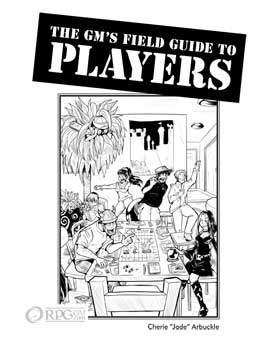Since the PCs aren’t likely to interact with Meadowbrook’s blacksmiths other than to have items repaired or commission new ones, I’m not going to spend much time detailing them.
Most Meadowbrook’s blacksmiths focus on creating practical items — horseshoes, plows and farming implements, iron nails and building tools, etc. Kael Pathfinder Stoutpoppy is the exception to the rule: he’s only swordsmith in Meadowbrook. While he can and does do other types of blacksmithing to pay the bills, his primary love is creating strong, beautiful blades.
Kael Pathfinder Stoutpoppy
Kael is a former ranger who settled down in Meadowbrook. While his home and shop are actually outside of the city proper, he and his wife, Janna, are frequent faces in town, especially at The Butter Churn tavern. While adventuring, Kael met and fell in love with Janna Stoutpoppy, a skilled fighter in the group he traveled with. When the two of them decided to retire and settle down, they chose Meadowbrook — Janna’s home town.
While Kael and Janna aren’t the only human-halfling couple Meadowbrook’s history, the match is unusual enough to raise eyebrows and start gossip tongues wagging. The Stoutpoppys had some difficulty accepting an human son-in-law, but Kael’s friendly, outgoing personality finally won over Janna’s parents. The rest of the Stoutpoppy clan, including Janna’s two sisters and her brother aren’t so generous of spirit and the divide has split appart the clan. Janna’s siblings have not spoken to her for the last three years. The couple are very much in love, but the situation has put a strain on their marriage; currently, the two of them are discussing plans to move to a larger city where they won’t stand out so much.
A skilled storyteller, Kael can frequently be found at The Butter Churn when not working. He’s frequently pressed to tell stories of his and Janna’s younger, wilder days.
Janna Stoutpoppy
Janna herself is much quieter than her husband. She’s friendly enough, but much more reserved and usually content to let her more outgoing half speak for both of them.
Her split with her family weighs heavily on her, though she does her best not to show it. She’s glad her parents have come around about Kael, but the fact that her siblings and most of her clan refuse to speak to her saddens her greatly. She also experiences some discrimination in the town; a few of the merchants, both human and halfling, refuse to serve her or Kael. She loves Kael deeply, but the situation is putting a lot of strain on her. She and Kael have begun to talk about moving to an area where there are more couples like them, something she’s not sure she wants to do. She feels torn by her love for Kael and her love for her family.
For her own part, Janna is an excellent fighter, extremely skilled at taking down opponents several times her size. She’s agile and intelligent, though very shy without a sword in her hand. Her shyness can come off as cold or haughty to those meeting her for the first time.
- Kael Pathfinder Stoutpoppy, human ranger (AD&D terms: 10th level ranger).
- Janna Stoutpoppy, halfling fighter/warrior (AD&D terms: 11th level fighter)
Note about halfling names in Meadowbrook’s world: Among halflings, property is passed down matriliniarly, from mother to daughter. Consequently, most husbands take their wife’s surname after marriage, adding it after their own. Kael and Janna followed this tradition, hoping that would help them gain more acceptence in Janna’s home town. Unfortunately, this hasn’t had the effect they’d desired.





